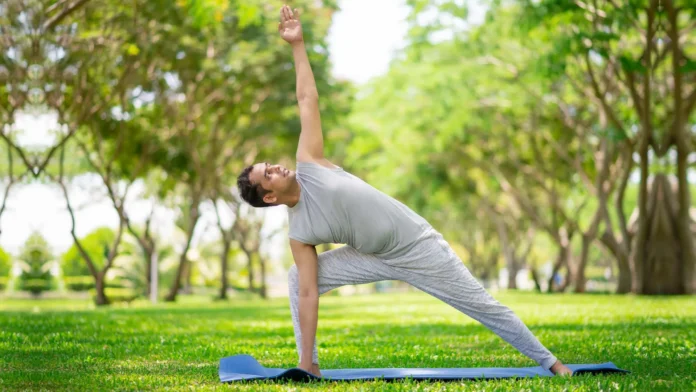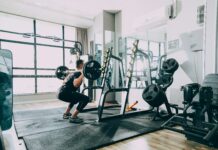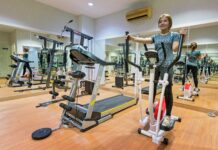Table of Contents
Flexibility is a key component of physical fitness, yet many people find themselves struggling with it. Whether you’re an athlete looking to enhance your performance or simply want to move more freely in your daily life, improving your flexibility is beneficial. However, it’s essential to do it safely to avoid injuries and achieve the best results. In this article, we’ll explore practical and safe ways to enhance your flexibility.
Understanding Flexibility
What is Flexibility?
Flexibility refers to the ability of your muscles and joints to move through their full range of motion. It’s crucial for performing everyday activities, maintaining good posture, and preventing injuries. Flexibility can be influenced by several factors, including genetics, age, and activity level.
Why is Flexibility Important?
Flexibility has numerous benefits, such as:
- Improved Performance: For athletes, flexibility can enhance performance by allowing more efficient and powerful movements.
- Injury Prevention: Flexible muscles and joints are less likely to get injured because they can handle a wider range of motion without strain.
- Better Posture: Flexibility helps maintain proper alignment of the spine and reduces the risk of back pain.
- Increased Mobility: As you age, maintaining flexibility can help keep you mobile and independent.
Common Challenges in Improving Flexibility
Identifying the Issues
Before diving into how to improve flexibility, it’s important to identify common challenges people face:
- Tight Muscles: Prolonged sitting or lack of activity can cause muscles to tighten.
- Improper Stretching Techniques: Stretching incorrectly can lead to injuries and hinder progress.
- Inconsistency: Flexibility improvements require regular practice, and inconsistency can slow down progress.
Overcoming Mental Barriers
Sometimes, the struggle with flexibility is mental rather than physical. Common mental barriers include:
- Impatience: Expecting immediate results can lead to frustration. Flexibility improvement takes time.
- Fear of Pain: Worrying about discomfort during stretching can prevent people from fully engaging in the exercises.
Safe and Effective Ways to Improve Flexibility
Start with a Warm-Up
Before you start stretching, it’s essential to warm up your muscles. A good warm-up increases blood flow to the muscles, making them more pliable and less prone to injury. Simple activities like brisk walking, light jogging, or dynamic movements like leg swings can serve as an effective warm-up.
Incorporate Different Types of Stretching
Static Stretching
Static stretching involves holding a stretch for a set period, typically between 15 to 60 seconds. This type of stretching is excellent for improving flexibility and is best done after a workout when your muscles are warm.
Dynamic Stretching
Dynamic stretching involves moving parts of your body through a full range of motion. It’s great for warming up before physical activities and helps improve flexibility while also preparing your muscles for action. Examples include arm circles, leg swings, and torso twists.
PNF Stretching
Proprioceptive Neuromuscular Facilitation (PNF) stretching is a more advanced technique that involves stretching a muscle to its limit, then contracting it for a few seconds, and finally stretching it further. This method is highly effective but should be done with caution and, ideally, under the guidance of a trained professional.
Focus on Major Muscle Groups
When aiming to improve flexibility, it’s important to target the major muscle groups, including:
- Hamstrings: Tight hamstrings can lead to lower back pain and poor posture.
- Hip Flexors: These muscles often become tight from prolonged sitting.
- Calves: Flexible calves can improve your overall lower body movement.
- Shoulders and Chest: These areas are prone to tightness, especially in individuals who work at a desk all day.
Use Proper Techniques
Proper technique is crucial to avoid injuries and gain the maximum benefit from stretching. Here are some tips:
- Move Slowly: Stretch slowly and avoid bouncing, which can cause muscle tears.
- Breathe Deeply: Deep breathing helps relax your muscles and can enhance the effectiveness of your stretches.
- Listen to Your Body: Pay attention to how your body feels. Stretching should create a gentle pull, not pain.
Creating a Flexibility Routine
Setting Realistic Goals
Set achievable goals for your flexibility routine. For example, aim to touch your toes or perform a deeper backbend within a specific timeframe. Having clear goals can help keep you motivated.
Consistency is Key
Improving flexibility requires regular practice. Aim to include stretching in your daily routine, even if it’s just for a few minutes. Consistency will yield the best results over time.
Combining Flexibility with Other Activities
Incorporate flexibility training into your overall fitness regimen. Activities like yoga, Pilates, and tai chi are excellent for improving flexibility while also enhancing strength and balance.
Monitoring Progress and Adjusting
Track Your Flexibility
Keep a journal of your flexibility progress. Note the exercises you do, the duration of your stretches, and any improvements you notice. This can help you stay motivated and make necessary adjustments to your routine.
Adjusting Your Routine
As you become more flexible, you may need to adjust your stretching routine. Increase the duration or intensity of your stretches gradually to continue making progress.
Preventing Common Stretching Mistakes
Avoid Overstretching
One of the most common mistakes is pushing your body too hard, too fast. Overstretching can lead to injuries such as strains and sprains. Always ease into stretches and know your limits.
Don’t Skip the Cool Down
Cooling down after a workout is as important as warming up. A proper cool-down, which includes gentle stretching, can help reduce muscle stiffness and improve overall flexibility.
Stay Hydrated
Hydration plays a vital role in maintaining muscle elasticity and flexibility. Make sure to drink plenty of water throughout the day, especially before and after stretching.
Seeking Professional Guidance
Benefits of Professional Help
If you’re new to stretching or have specific flexibility goals, consider seeking help from a fitness professional. They can provide personalized guidance and ensure you’re using the correct techniques.
Classes and Workshops
Taking classes like yoga or Pilates can also be beneficial. These classes are designed to improve flexibility and are usually led by experienced instructors who can help you stretch safely and effectively.
Conclusion
Improving your flexibility is a journey that requires patience, consistency, and proper technique. By understanding the importance of flexibility, overcoming common challenges, and incorporating safe stretching practices into your routine, you can enhance your flexibility and overall well-being. Remember, flexibility improvements take time, so be patient with yourself and enjoy the process. Happy stretching!





